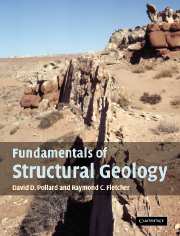Summary
Straight-limbed chevron-like folds in Cretaceous strata in the footwall of the Lewis Thrust, Canadian Rockies, from the Kananaskis Highway between Banff and Blairmore, looking south. Photograph by D. Wiltschko.
This bulletin is the second contribution to the general investigation of the physical constants of rocks, the experiments concerning which follow a general plan devised by Mr. Clarence King. Questions bearing directly on the viscosity of rock masses make up so large a part of Mr. King's geological observations, that the duty of enquiring into the physics of this enormously complicated subject devolved seriously upon me. Above all things some form of reliable working hypothesis was to be discovered; and this is what the present bulletin endeavors to accomplish. I believe the physical hypothesis has been found and that the data afford substantial corroboration of Maxwell's theory of the viscosity of solids (Barus, 1891).
Rock deformation by viscous flow
As the above quotation indicates, over one hundred years ago, the first director of the United States Geological Survey, Clarence King, hired a scientist to determine the viscosity of rock. Searching through King's account of the survey of the fortieth parallel, we find no mention of “Questions bearing directly on the viscosity of rock masses …” King did not write much, and so it appears his thoughts on this subject and the observations that motivated them may have been lost.
- Type
- Chapter
- Information
- Fundamentals of Structural Geology , pp. 384 - 420Publisher: Cambridge University PressPrint publication year: 2005



